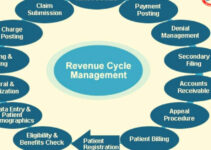The consumer market is very large and diverse comprising so many variables; it is nearly impossible for a business to target every part of the whole market. Segmenting the market would help companies to send them efficiently. Today, we’ll discuss what is market segmentation; its various types; benefits, common errors that companies mark, and examples.
What is Market Segmentation?
Market segmentation is the process of dividing and segmenting your target markets into recognizable approachable groups. It develops subsets and subgroups of the markets based on the common interests, priorities, needs, demographics, and various other behavioral and psychographic capabilities in order to better comprehend the target customers.
Comprehending various segments of the markets, allows you to leverage this information in marketing, sales, and product strategies. Markets segments would help you to empower your product development cycle by telling you how to develop your product and offer it to different segments. It is like higher income versus lower income or men versus women.
Types of Market Segmentation
Targeting and segmenting the markets would help you to comprehend how your target customers would react in various situations; like buying your product. Some of the main types of markets segmentations are as follows;
Geographic Segmentations
Geographic segmentations are a subgroup and subcategory of demographic segmentations; also a separate categories in their own way. It studies that various groups of the target customers reside in different geographical boundaries and locations. However, it’s important to keep in mind the preferences, needs, and interests of potential customers are different in different geographical locations. Comprehending the geographical region would help companies to know where to expand their business, what to advertise, and where to sell what type of products.
Demographic Segmentations
Demographic segmentations comprise various elements like nationality, occupation, job, gender, race, size, family, income, education, and age. The demographic is a common type of segmentations, and it answers follows questions;
- The type of product or service you’re purchasing
- How customers use products
- The amount of money we’re willing to spend on them
- How often we do buy them
Behavioral Segmentations
Behavioral segmentations is the process of segmenting and dividing the market based on the behaviors and decision-making patterns like; usage, lifestyle, consumption, and purchase. For instance, the young customers would buy bottles of body washing liquid, whereas the older customers would buy soap bars. Dividing the market based on the purchasing behavioral pattern of customers helps companies to follow a more targeted approach. It helps you to focus on what you know about customers and what they’re going to buy.
Firmographic Segmentation
Firmographic segmentation is the same as the demographic type, but the different demographic focuses on individual customers and firmographic focuses on companies. The firmographic segmentations help companies to focus on the number of employees, the company’s size, and how managing small business problems is different from large corporate issues.
Psychographic Segmentation
Psychological segmentation focuses on the psychological element of customer behavior. It divides the markets based on the interests, opinions, values, personality traits, and lifestyles of customers. For instance, the health and fitness markets employ psychographics divisions while categorizing their customers like their exercise routine, healthy living, and the things they care about.
Benefits of Market Segmentation
Product Development
When you divide the markets into various segments, it allows you to focus on the needs and wants of customers. Ultimately, it leads you to develop the right product that satisfies the needs of customers.
High Profit
Different types of customers purchase different types of products. If your focus is on premium products and making a profit, segmentations would help you to target the right types of customers that have got a lot of disposable income.
Driving Growth
If your target markets is price-conscious customers, and you offer them the lower price products through segmentations. They would become your repetitive customers because you’re offering them what they’re looking for.
Niche Markets
Segmenting the customer markets would uncover various new areas. Along with learning many new categories and fields, it helps you to recognize your niche market that is relevant to your offer.
Stay on Track
You can easily get distracted when you’re targeting the wider market. Segmentations allow you to stay on the right track and focus on the right customers that are interested in your products.
Brand Loyalty & Differentiation
When you have chosen a particular niche, it helps you to differentiate yourself from the competitors. When you offer customers what they want, you win their trust and they become loyal customers of your brand.
Higher Response Rate
It allows you to craft the most precise advertisement and communication message for your audience. You would use various digital media platforms to approach your customers, and it would increase your customer response rate.
Effective Marketing Strategies
When you know your target customers and their needs and wants; then you can develop the most effective marketing strategies and techniques to make your product attractive to them.
Powerful Marketing Message
Your marketing and advertisement message won’t be general and vague. You would develop a message that connects with your customers and they can relate to it easily. It’s because you know their needs, wants, and wishes.
Errors of Market Segmentation
Some of the errors that you should avoid while segmenting the market;
- You should avoid making the highly specialized and a very small segment. They can be distracting, inaccurate, and not quantifiable
- While segmenting, your focus should not only be on segmentations of the recognizable groups but also on the money as well. Whether the particular segment has disposable income to buy your product or not
- Circumstances and customers would change, and you should be ready to face all types of market variables
Examples of Market Segmentation
Automobile manufacturing companies are excellent at correctly recognizing the markets segments, developing the right product, and launching a marketing campaign that attracts the attention of customers.
Cereal producer targets three to four segments of the market at once with different marketing campaigns. For instance, first is their youngest consumers that tap into the children’s movie theme; healthy cereal to the health cautious customers, and push the old brand flavor to the old customers.
Conclusion: What is Market Segmentation? Types, Benefits, Examples
After an in-depth study of what is market segmentation; its four main types, benefits, errors, and examples; we have realized that market segmentations is significant for your company’s growth. If you’re planning it for your company, then you should keep in mind the abovementioned types and guidelines.

Ahsan Ali Shaw is an accomplished Business Writer, Analyst, and Public Speaker. Other than that, he’s a fun loving person.


